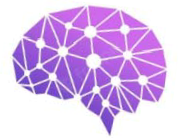
qEEG screening
Service code s9011
Short description
AD/HD is characterized by a breakdown in attention and impulse control, which leads to the failure of attending to what is relevant and poor filtering of what is irrelevant. This is due to a dysfunction in brain-body arousal associated with a loss of cortical control over subcortical activating systems.
AD/HD is defined by the Diagnostic and Statistical Manual of Mental Disorders, fifth Edition (DSM–5) as involving pervasive symptoms of inattention and/or hyperactivity-impulsivity, which are observed in 3%–5% of children prior to the age of seven(1). A number of psychiatric disorders share similar symptomatology. These disorders include learning disabilities, conduct disorders, and affective disorders. It is also possible that a behavioural syndrome similar to AD/HD can result from lack of discipline or from improper rearing practices in the home environment(2). As a result of considerable symptoms overlap, it is possible that AD/HD could be over-diagnosed. Moreover, it is important to distinguish the following symptomatically overlapping subgroups: Inattentive AD/HD; Combined AD/HD; ADD without hyperactivity; AD/HD (combined type) with comorbid oppositional defiant disorder; Specific developmental learning disorder; Generalized learning disorder; and Specific learning disorder.
In July of 2013 the US Food and Drug Administration (FDA) approved the usage of qEEG as confirmatory assessment aid for ADHD.
A recent review prepared for the American Psychiatric Electrophysiological Association summarized evidence for the clinical utility of qEEG in diagnosing attention disorders and delineating the underlying aetiology of learning and attention disorders(1).
Scientific research(2,3,4,5) demonstrated that qEEG analysis differentiated ADHD subjects from nonclinical comparison groups with a reported sensitivity of 88-90% and specificity of 94-98% and ADD versus specific developmental learning disorders (SDLD), with a sensitivity of 97% and a specificity of 84.2%.
Results
By performing this qEEG screening you will get the information on:
- whether you (or your child) have a qEEG pattern typical for AD/HD and
- which type (inattentive or combined) is present,
- distinguishing from the symptomatically overlapping subgroups.
Notes:
- The results of qEEG analysis are put in context of published scientific studies, the individual’s health history, complaints, symptoms and psychometric and other evaluations (if available).
- Present psychotropic medication use may affect the results.
To place a service order, use the following email:
References
- Hughes JR, John ER: Conventional and quantitative electroencephalography in psychiatry. J Neuropsychiatry Clin Neurosci 1999; 11: 190–208.
- Monastra VJ, Lubar JF, Linden M: The development of a quantitative electroencephalographic scanning process for attention deficit-hyperactivity disorder: Reliability and validity studies. Neuropsychology 2001; 15: 136–144.
- Matsuura M, Okubo Y, Toru M, et al: A cross-national EEG study of children with emotional and behavioural problems: a World Health Organization collaborative study in the western Pacific region. Biol Psychiatry 1993; 34: 59–65.
- Chabot RJ, Serfontein G: Quantitative EEG profiles of children with attention deficit disorder. Biol Psychiatry 1996; 40: 951-963.
- Bresnahan SM, Barry RJ. Specificity of quantitative EEG analysis in adults with attention deficit hyperactivity disorder. Psychiatry Res 2002; 112: 133-144.